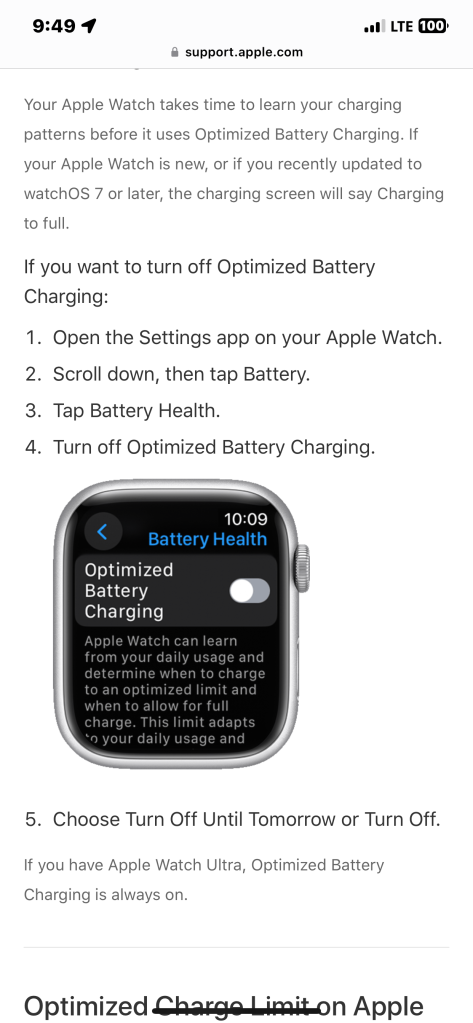Back in August 2017 I wrote about purchasing the Apple 12.9” second generation iPad Pro. I’d found it discounted online and felt it was a decent enough purchase at that time for something lighter and easier to transport than my MacBook Pro. I’d also written how I was going to use an iOS application specifically created to help writing. So how did all that turn out?
Right now I’ve stopped using Ulysses the writing app; I no longer pay yearly for it. I still have the trackball, but I no longer use it with the iPad as it’s too cumbersome. It’s being used on a “regular computer.” For a long period the iPad sat folded up with its keyboard, unused except for my occasional checks to update the operating system. And then a “funny” thing happened around the first of 2023. Back in December 2021 I purchased a 13” M1 MacBook Pro (released 2020) on sale. I started to use that fairly heavily, especially out in the field leaving the big 16” Intel MacBook Pro at home. Meanwhile, the iPad Pro sat alone and unloved.
Then one day, out of the blue, early last year, I grabbed a USB-C to Lightening cable and plugged the iPad Pro into the M1 MacBook Pro and enabled Sidecar. All of a sudden I had a second screen on the big iPad Pro screen. That moment of epiphany made me suddenly appreciate the iPad Pro, not for what it could do alone but what it could do with my MacBook. I started to drop it into my computer bag along with my MacBook. More than once I hooked up the iPad Pro to my MacBook and then duplicated the MacBook’s screen onto the iPad, and then positioned the iPad so that others around me could see what I was doing on the MacBook without straining to look over my shoulders. Other times I used the iPad as a separate screen that greatly enhanced my ability to open up multiple applications and multitask. From that point forward the 12.9” iPad Pro was front and center, and I started to use it both with my MacBook and by itself more and more. It was like I had re-purchased the device.
What I find remarkable about the 12.9” iPad Pro is that the battery is still healthy after all this time; it still charges to full, and it holds a charge a good long while. I was even more surprised that Apple updated the software on this iPad to the latest, 17.1.1. I suspect that when ipadOS 18 is released sometime next year this iPad Pro will finally be dropped. I’m not nearly afraid of that happening because of how ipadOS has evolved over the last five years.
When I bought this device, it still had ipadOS version 10 on it. Seven major versions later and I can see a clear difference for the better using this iPad. If the quality of the current ipadOS release had been as good back in 2017 as it is now, I would never have set the iPad aside and nearly forgotten about it. The different between ipadOS 10 and 17 is that vast, and ipadOS 17 is that good. Once again I’m writing this post on it using the WordPress web-based editor in classic mode, and it’s indistinguishable from working on any other computer that hosts a web browser.
What has happened is my use of the 12.9” iPad has displaced my use of the Lenovo Chromebook. The Chromebook is a lot more computer than the iPad, as I have a Debian 11 virtual machine configured on it that I use for some software development. The pull of this iPad over the Lenovo is the screen. The second generation 12.9” iPad Pro screen is far superior to the much younger Lenovo Chromebook’s screen, matching the quality of all my MacBooks in this household. With my eyesight slowly deteriorating over time, screen quality is becoming more and more of a key usability feature for me. The clarity and brightness of the iPad screen can’t be appreciated enough in my case.
I have debated within myself whether I should trade in the 2019 16” MacBook Pro, a.k.a. “The Beast.” It was purchased with an Intel octacore I9, 64GB memory, and 4TB disk space. The price, with Apple Care, was nearly US$6,000. That was paid for by the project I was working on in 2020, and the machine was left with me when the project came to an end. I still have Apple Care with the machine that will end September 2024. I have been wondering if I should “down size” to a far less expensive Apple Silicon MacBook, a 16” device with an M2 Pro and only 1/2 the memory and disk storage. It would still be expensive, but not nearly as expensive as The Beast. I could take some of that money and invest it into another, more current, iPad Pro with Apple Silicon, thus having the same capabilities as I have now with the 12.9” iPad.
All of that means lots of money, money I’m no longer willing to spend on tech. I’m re-discovering old tech and realizing I never took full advantage of all this old tech I do have. I’m more inclined to purchase a new iPad Pro than I am a MacBook Pro.
For the time being I’m just enjoying the old/new experience of this 2017 technology which shines just as brightly in late 2023 as the latest Apple gear.



You must be logged in to post a comment.